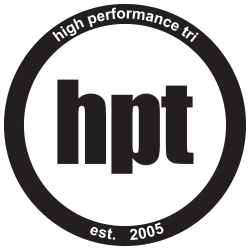3 Key Loads You Need For Training
These are the show notes for my podcast on the 3 Key Loads You Need For Training - Episode 23.
7 topics to discuss today - would love to do more but that would go against my goal of simplicity
Elements of Loading
Measuring Load
Chronic Training Load
Acute Training Load
Overload
Adaptation
Are you adapting?
Elements of Loading
To go fast you need to be strong physically. Gradually increasing or manipulating your training loads can make you stronger and as such, faster.
Key Load 1 - Physical
Mainly, this gradual load increase can be done by adjusting the three major components of training. This is the F-I-T principle.
Frequency - number of sessions
Intensity - how hard the sessions are
Time - how long the sessions go for
Key Load 2 - Central
But there’s also the “central loads” ….
Heat
Altitude
Hills
These elements can also be specific to the race demands. They are not just “dumb” load elements.
These elements are great in that they can have an effect on your physiology but place less load on your body.
Key Load 3 - Cognitive
Let’s not forget the cognitive loads. The secret ones that the smart athletes use. The ones that don’t show up as a number on a graph.
Running in the rain
Swimming when it’s cold
Showing up for sessions when you really don’t want to.
These cognitive loads won’t make you physically stronger but will definitely make you mentally stronger. I am sure everyone agrees that being mentally stronger is a competitive advantag
Measuring Load
We measure physical training load as a combination of the duration of the session with the intensity of the session. How far you went multiplied by how hard you went.
Training load = volume x intensity
Training Peaks uses the TSS Training Stress Score system for this by simply saying 1 hour at “threshold” = 100 TSS points. Then it applies an algorithm to give you a score for your session.
Chronic Training Load
Chronic Training Load (CTL) is your rolling 6 week average of TSS per day.
CTL is what we use to measure our current fitness. Of course there are many factors that go into fitness but how much load we are currently able to manage goes a long way to telling us how fit we are.
Acute Training Load
Acute Training Load (ATL) is your rolling 7 day average TSS per day.
In Training Peaks this number is called your fatigue number because it is the major factor that will indicate how fatigued you are.
If ATL is significantly higher than CTL (you have done a lot more this week than you have averaged over the last 6 weeks) then you will feel that fatigue.
Overload
If you make your acute training load just above your chronic training load then you are giving it an incremental load increase.
If you do an 80min long run this month and next month you make it 90min then you are gradually overloading and will adapt to that new load over time
Adaptation
If you make your ATL less than your CTL then you will be allowing your body to recover. The best examples of this are the recovery week and taper period.
It’s not the work that improves you - it’s when the body is recovering that it becomes stronger.
Are you adapting?
Its pretty easy to see if you aren’t adapting to the training. You will miss sessions, have a low mood state, your training heart rate will be raised or maybe even suppressed, you will get viruses easily, your heart rate variability will be down and your rising heart rate will be up.
If you are successfully adapting to your training you will have an increasing training load and will have good markers around that. Your training times will be stable or improving, your HRV will be good, morning heart rate where it should be, your mood will be good, your heart rate will be stable at a given pace or power.
